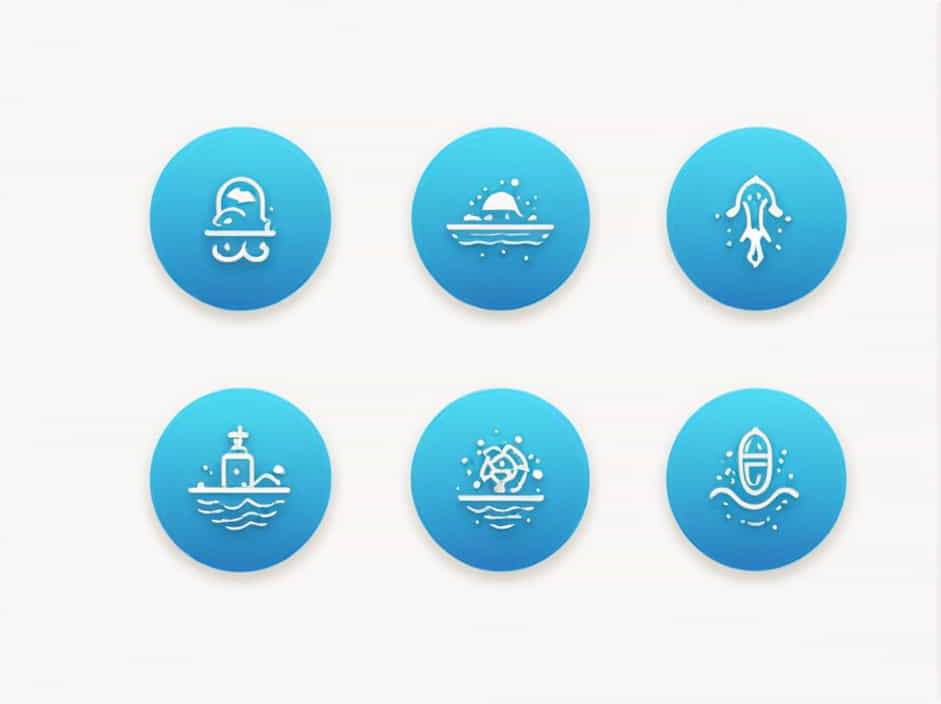The future of oceanographic research is evolving rapidly, driven by technological advancements, environmental concerns, and global scientific collaboration. As the world’s oceans cover over 70% of the Earth’s surface, understanding their complex systems is essential for addressing climate change, marine biodiversity loss, and sustainable resource management.
With increasing threats such as ocean acidification, rising sea levels, and plastic pollution, researchers are looking toward cutting-edge innovations to explore and protect marine environments. The future of oceanographic research appears to lie in autonomous technology, artificial intelligence, deep-sea exploration, and sustainable marine practices.
The Role of Advanced Technology in Oceanographic Research
1. Autonomous Underwater Vehicles (AUVs) and Remotely Operated Vehicles (ROVs)
Autonomous underwater vehicles (AUVs) and remotely operated vehicles (ROVs) are revolutionizing deep-sea exploration. These robotic systems can navigate extreme ocean depths, collect data, and conduct underwater surveys without the need for human divers.
- AUVs are self-guided and can explore areas that are too dangerous or inaccessible for humans.
- ROVs are controlled remotely and equipped with cameras and sensors to collect real-time data.
- Both technologies are essential for studying deep-sea ecosystems, underwater geology, and shipwrecks.
2. Artificial Intelligence (AI) and Big Data in Ocean Research
AI and big data analytics are transforming how scientists analyze oceanic patterns, predict climate changes, and track marine life. AI-powered algorithms can process vast amounts of oceanographic data more efficiently than humans.
- AI is used for marine species identification, tracking ocean currents, and detecting changes in coral reefs.
- Machine learning models help scientists predict hurricane formations, El Nià±o events, and ocean acidification.
- AI-driven drones are improving ocean mapping and surveillance efforts.
3. Satellite and Remote Sensing Technologies
Satellites play a crucial role in monitoring ocean conditions on a global scale. They provide real-time data on sea surface temperatures, wave patterns, and marine biodiversity.
- Remote sensing technology helps detect oil spills, illegal fishing activities, and harmful algal blooms.
- Lidar (Light Detection and Ranging) is being used to create detailed ocean floor maps.
- New satellite systems are enhancing our ability to predict tsunamis, sea-level rise, and extreme weather events.
Exploring the Deep Ocean: The Final Frontier
1. Unlocking the Mysteries of the Deep Sea
Despite technological progress, over 80% of the ocean remains unexplored. The deep sea is home to undiscovered species, extreme ecosystems, and valuable resources.
- Researchers are using bioluminescence detection systems to study deep-sea marine life.
- Hydrothermal vents and underwater volcanoes hold clues to Earth’s early life forms and potential extraterrestrial habitats.
- Advances in pressure-resistant submersibles are enabling scientists to reach greater depths than ever before.
2. Searching for Sustainable Marine Resources
The future of oceanographic research will focus on sustainable resource extraction. Scientists are studying deep-sea minerals, medicinal compounds from marine organisms, and renewable ocean energy sources.
- Seabed mining is being explored for harvesting rare earth metals needed for electronics.
- Marine biologists are discovering new pharmaceutical compounds in deep-sea sponges and corals.
- Wave and tidal energy are emerging as clean alternatives to fossil fuels.
Climate Change and Ocean Conservation
1. Understanding the Impact of Climate Change
Oceans act as a climate regulator, absorbing more than 90% of excess heat from global warming. Oceanographic research is vital for understanding:
- The melting of polar ice caps and rising sea levels.
- The impact of ocean acidification on coral reefs and marine ecosystems.
- The role of the ocean in carbon storage and reducing greenhouse gases.
2. Marine Conservation and Ecosystem Protection
Preserving marine biodiversity is a top priority for future oceanographic studies. Scientists are working on:
- Restoring coral reefs using artificial reef structures and genetic engineering.
- Implementing marine protected areas (MPAs) to safeguard endangered species.
- Studying the effects of overfishing and plastic pollution on marine food chains.
The Future of Deep-Sea Exploration: Human vs. Machine
1. Will Humans Still Explore the Deep Ocean?
As technology advances, there is a growing debate about whether human-led deep-sea exploration will continue or be replaced by robots.
- Traditional human-piloted submarines, like Alvin and the Deepsea Challenger, have made groundbreaking discoveries.
- However, robotic systems are safer, cheaper, and can withstand extreme pressures.
- The future may involve hybrid missions, combining human expertise with AI-driven robotics.
2. The Role of Citizen Scientists
Public engagement is becoming an essential part of oceanographic research. Citizen science projects allow individuals to:
- Contribute to marine data collection through mobile apps.
- Participate in beach clean-ups and microplastic monitoring programs.
- Help scientists track whale migration and coral bleaching events.
The Future of Oceanographic Research: Challenges and Opportunities
1. Challenges Facing Oceanographic Research
While technological advancements are promising, several challenges remain:
- High costs â Ocean exploration requires significant financial investment.
- Environmental risks â Deep-sea mining and resource extraction must be regulated.
- Political and territorial disputes â Some marine areas are contested by different nations.
2. Future Opportunities for Ocean Science
Despite the challenges, the future of oceanography holds immense potential:
- Interdisciplinary collaboration â Scientists, engineers, and conservationists are working together.
- AI-driven ocean mapping â We may soon achieve full ocean floor mapping by 2030.
- Sustainable blue economy â Balancing economic growth with ocean conservation is becoming a global priority.
The future of oceanographic research appears to lie in advanced technology, artificial intelligence, and sustainable practices. As we uncover the ocean’s secrets, we must also protect marine ecosystems for future generations.
From autonomous underwater vehicles to climate change studies, new research efforts are shaping the future of ocean science. By embracing innovation and international collaboration, we can ensure that the world’s oceans remain a source of discovery, biodiversity, and life-supporting resources.
